
Metal Slug is a 1996 run and gun arcade video game originally developed by Nazca Corporation and released by SNK for the Neo Geo MVS. It is the first installment in the eponymous series. Set in 2028, players assume the role of Peregrine Falcon Strike Force soldiers Marco Rossi and Tarma Roving on a fight against the Rebel Army led by Donald Morden and overthrow his coup d'état to prevent a New World Order.

Blazing Star is a shoot 'em up video game developed by Yumekobo and published by SNK in 1998 for the Neo Geo arcade and home systems. It is a follow-up to Pulstar (1995) and features side-scrolling action similar to its predecessor and different ships with varying characteristics. It was made less challenging than its predecessor, and the graphic quality was improved upon.

Waku Waku 7 is a 2D fighting game developed and published by Sunsoft initially as an arcade game for the Neo Geo MVS arcade system in 1996 worldwide.
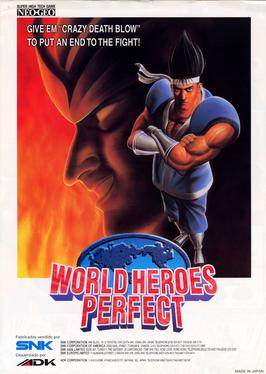
World Heroes Perfect is a 1995 fighting arcade game developed and published by ADK with the assistance of SNK. It was originally released for the Neo Geo MVS arcade cabinet on May 25, 1995. It is the fourth and final title of the World Heroes series.

Money Puzzle Exchanger is a puzzle game created on January 17, 1997 by Japanese video game developer Face for the Neo Geo MVS arcade system. Athena Co. Ltd. ported it to the Game Boy on August 29, 1997, and the PlayStation on November 5, 1998. The Japanese PlayStation version was made available by MonkeyPaw Games on the PlayStation Network's import store on November 16, 2010. It was later re-released as part of the Arcade Archives Neo Geo series for PlayStation 4, Xbox One and Nintendo Switch on June 28, 2018.
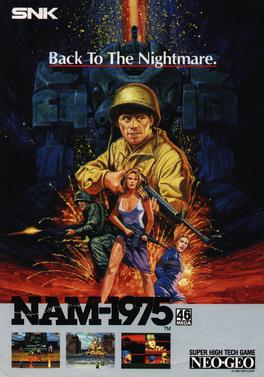
NAM-1975 is a war shooting gallery arcade video game developed and originally published by SNK on April 26, 1990. It was one of the launch titles for both the Neo Geo MVS (arcade) and Neo Geo AES (home) platforms, in addition to being the only title in the system that does not feature the Neo Geo boot screen in its attract mode, as well as one of the pack-in games for the AES.

Neo Geo is a family of video game hardware that was developed by SNK. On the market from 1990 to 2004, the brand originated with the release of an arcade system, the Neo Geo Multi Video System (MVS) and its home console counterpart, the Neo Geo Advanced Entertainment System (AES).

Burning Fight is a beat 'em up arcade game released by SNK in 1991 for the Neo Geo MVS system. Introduced to capture a share in the then-popular beat 'em ups market, it was meant to compete with Technōs' Double Dragon, the leader of the genre at the time. Three years after its release in the arcades and on the Neo Geo AES, it was released on Neo Geo CD as the only other home version.
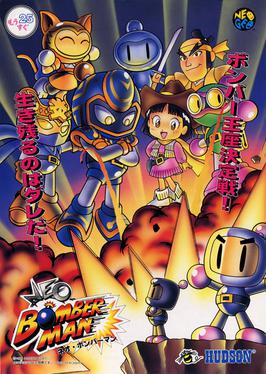
Neo Bomberman is an action-maze arcade video game developed by Produce! and published by Hudson Soft for the Neo Geo MVS on May 1, 1997. It is one of two games in the Bomberman franchise that was released for the Neo Geo platform, the first being Panic Bomber, and the only one to retain its traditional top-down gameplay. It was released for the Neo Geo MVS (arcade) and has not received a home console release to date. It was the last original Bomberman title to be released for arcades until Konami's Bombergirl in 2018.

Zed Blade is a horizontally scrolling shooter arcade video game developed by NMK and originally published by SNK on September 13, 1994. It is the only game created by NMK for the Neo Geo arcade platform. In a science fiction setting, players choose one of three characters to attempt to overthrow an army of enemies led by the on-board supercomputer at the automated Yggdrasil space station and seize full control of it once again.
Arcade Archives is a series of emulated arcade games from the late 1970s, 1980s, 1990s, and early 2000s for PlayStation 4, Xbox One, Microsoft Windows, and Nintendo Switch, published by Hamster Corporation. A sub-series called ACA Neo Geo is focused on rereleasing Neo Geo titles in their original arcade format, unlike many services with attempts to emulate the console versions.

Puzzled is a falling-block puzzle video game developed and published by SNK that was released for Neo Geo arcade hardware in 1990, the Neo Geo home console in 1991, and the Neo Geo CD in 1994. The game was ported to mobile phones in 2005, then was re-published by D4 Enterprise on the Wii Virtual Console in June 2011, and it is also one of the twenty games that came pre-loaded on the Neo Geo X console released in 2012. It was also ported in August 2017 to Nintendo Switch, Xbox One, and PlayStation 4 as part of Hamster Corporation's ACA Neo Geo series.

Sun Shine is an unreleased 1990 tile-matching puzzle arcade video game that was in development by Alpha Denshi and planned to be published by SNK for both the Neo Geo MVS (arcade) and Neo Geo AES (home) platforms. It is the first puzzle game to be developed for both systems and the smallest Neo Geo game in terms of memory data.
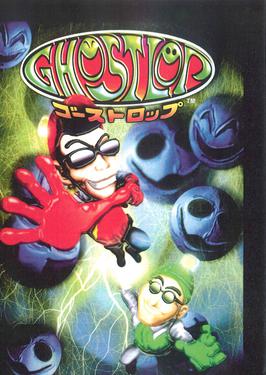
Ghostlop is an unreleased 1996 puzzle arcade video game that was in development by Data East and planned to be published by SNK for the Neo Geo MVS (arcade), Neo Geo AES (home) and Neo Geo CD. In the game, players assume the role of ghosthunters Bruce and McCoy from the Data Ghost agency to evict mischievous ghosts across multiple locations. Its gameplay mainly consists of puzzle mixed with Breakout-style action elements using a main two-button configuration.

Power Spikes II is a volleyball arcade video game developed by Video System and originally published by Taito on October 19, 1994. A follow-up to Hyper V-Ball on Super Nintendo Entertainment System, it was first launched for Neo Geo MVS (arcade) and later ported to Neo Geo CD. It is the final installment in the Super Volleyball series. It is also the only volleyball game released on the Neo Geo.

Over Top is a racing arcade video game developed by ADK and originally published by SNK on April 26, 1996. It is the spiritual successor to Thrash Rally, which was released earlier in 1991 on Neo Geo platforms.
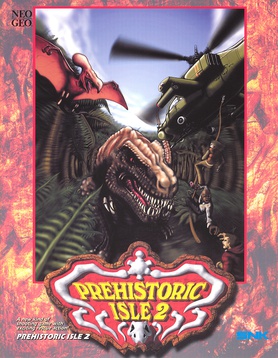
Prehistoric Isle 2 is a 1999 scrolling shooter arcade video game co-developed by Saurus and Yumekobo and published by SNK. It is the sequel to the original Prehistoric Isle, which was developed and released earlier in 1989 by SNK. In the game, players take control of helicopters to shoot at dinosaurs while rescuing people. Although first launched in arcades, the title has since been re-released through download services for various consoles. It received mixed reception since its initial arcade release and garnered less success than its predecessor.

Super Sidekicks is a 1992 soccer arcade video game developed and published by SNK. It is the first installment in the eponymous series and the second soccer game released for Neo Geo MVS, succeeding Soccer Brawl (1991). Featuring an arcade-style approach to soccer compared to other games released at the time, the title allows players to choose any of the available game modes with AI-controlled opponents or other human players with the team of their choosing. Its gameplay uses a simplified two-button configuration.
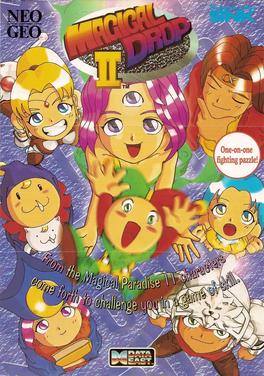
Magical Drop II is a 1996 puzzle video game developed and published by Data East for the Neo Geo arcade and home platforms. It was later ported to Neo Geo CD, Super Famicom, and Sega Saturn. It is the second entry in the Magical Drop series. In the game, the player takes control of one of several characters, battling against computer-controlled opponents before facing the villainous Empress in a final encounter. Gameplay is similar to its predecessor Magical Drop (1995) albeit with improvements; the objective is to clear the screen of constantly advancing colored 'drops' via a character placed at the bottom of the playfield, which can grab drops and make them disappear by putting them as a column of three or more drops of the same color. Two players can also participate in a competitive versus mode.

Magical Drop III is a 1997 puzzle video game developed and published by Data East for the Neo Geo arcade and home platforms. It was later ported to Sega Saturn, PlayStation, Neo Geo Pocket Color, Game Boy Color, Windows, and Zeebo. It is the third entry in the Magical Drop series. In the game, the player takes control of one of several characters, battling against computer-controlled opponents. Gameplay is similar to previous entries albeit with further additions; the objective is to clear the screen of constantly advancing colored 'drops' via a character placed at the bottom of the playfield, which can grab drops and make them disappear by putting drops as a column of three or more of the same color. The player can also participate in a board-style adventure mode, while two players can play against each other in a competitive versus mode.




















